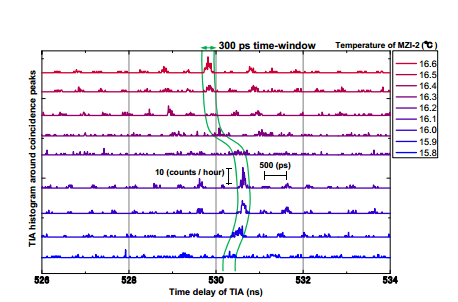Japanese Telco Smashes Entanglement Distance Record
Entanglement is the strange quantum phenomenon in which two particles are so deeply linked that they share the same existence, even though they might be separated by huge distances. In the language of quantum mechanics, both particles are described by a single wave function.

Entanglement makes possible all kinds of exotic phenomena that cannot occur in the ordinary, non-quantum world. Physicists regularly use entanglement to teleport particles from one part of the universe to another, without travelling through the intervening space. They also use entanglement to send secret messages that cannot be cracked. And entanglement is a crucial ingredient in quantum computing and a quantum internet.
Indeed, many physicists believe entanglement to be so important that it is likely to become a valuable resource that is bought and sold over future networks, like quantum gold.
So the ability to distribute entangled particles of long distances is increasingly valuable. In this blog, we have followed various teams as they raced to break various distance records for phenomena that depend on entanglement. Last year, for example, a Chinese team claimed the distance record for teleporting photons over a distance of 97 kilometer only to find a European team smash the record just a few months later.
Today, a Japanese team goes even further. Takahiro Inagaki and a few pals at the NTT Basic Research Laboratories in Kanagawa say they’ve distributed entangled photons over a distance of 300 kilometers. “This experimental result for entanglement distribution over 300 km of optical fiber illustrates the potential for fiber experiments related to long-distance quantum communication,” they say.
These guys created entangled photons by a standard process known as parametric down conversion. This converts a single high energy photon into two low energy entangled photons by passing through a crystal of lithium niobate.
Each entangled photon then passes into a roll of optical fiber 150 kilometers long. The team then tested the photon pairs that emerged to check that they were still entangled, which indeed they were.
The trouble with these kinds of experiments is that most of the photons are absorbed by the optical fibre. And the further the photons travel, the more likely it is that they will be absorbed. So just a tiny fraction of the original photons emerge at the end of a 150 kilometer fiber.
What’s more, photon detectors are far from perfect and often register photons when none are present. This so-called dark count introduces noise that can swamp the few photons that physicists are interested in.
Inagaki and co have overcome this with a new generation of superconducting photon detectors that have a much lower dark-count than previously possible.
That’s impressive but the new work has clear limitations. Inagaki and calculate that in their current experiment, the number of photons pairs that emerge would allow a data rate of about 1 bit every 10 million seconds. However, they say better detectors in the near future should improve that. “Thus, although quantum key distribution over 300 km in fiber is difficult to achieve with our present experimental setup, it will be possible with improved detectors and a more stable experimental setup for long measurement times,” they say.
Nevertheless, this new work demonstrates considerable ambition and certainly shows the value physicists place on being able to transmit entanglement.
Ref: arxiv.org/abs/1310.5473: Entanglement Distribution Over 300 km Of Fiber
Keep Reading
Most Popular
Large language models can do jaw-dropping things. But nobody knows exactly why.
And that's a problem. Figuring it out is one of the biggest scientific puzzles of our time and a crucial step towards controlling more powerful future models.
How scientists traced a mysterious covid case back to six toilets
When wastewater surveillance turns into a hunt for a single infected individual, the ethics get tricky.
The problem with plug-in hybrids? Their drivers.
Plug-in hybrids are often sold as a transition to EVs, but new data from Europe shows we’re still underestimating the emissions they produce.
Stay connected
Get the latest updates from
MIT Technology Review
Discover special offers, top stories, upcoming events, and more.